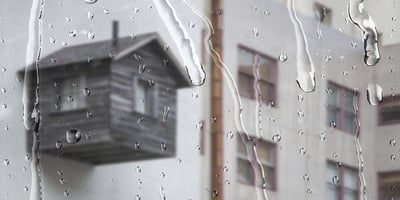How Much Electricity Does an Air Conditioner Use Per Month?
Have you ever asked yourself why energy costs appear to push through the roof during summer? Knowing how AC consumes energy on a monthly basis is important for expense management, especially in summer when air conditioners are blasting to keep relaxing at ease.
Air conditioners help combat the heat while providing much-needed comfort, but they can also stealthily escalate the energy consumption of most households. This makes it vital to not only grasp how they consume power but also learn how to optimize their performance for efficiency.
We’ll break down the aspects that impact electricity usage and guide you through calculating monthly consumption. Also, don’t miss actionable tips to reduce your AC’s energy impact—all while staying cool and comfortable!
Factors That Affect Air Conditioner Electricity Usage
From the type of unit to daily usage, several linked factors determine the power consumption of your air conditioner. Understanding these factors helps you to control your energy consumption and guarantee effective cooling free from needless power consumption. Let’s break it all down:
1. Size and Cooling Capacity (BTUs)
One of the most important things affecting an air conditioner's power consumption is its cooling capacity, expressed in British Thermal Units (BTUs). Greater BTU ratings are needed in larger spaces, but running an air conditioner too strong for a room will cause energy waste from frequent on- and off-cycle operation. On the other hand, a unit too small for the given area will have to run continuously, which results in inefficiency.
For reference:
- A 150-square-foot room typically needs a 5,000 BTU air conditioner.
- A 500-square-foot space requires around 10,000–12,000 BTUs.
- Larger homes often need central systems or mini-splits with much higher BTU ratings.
2. Type of Air Conditioner
Every different air conditioning system has a specific characteristic that serves a particular need or space. The amount of energy consumed by each also differs. Different types of these systems have their pros and cons, so understanding the features and performance can help you decide on an option that best meets your needs and is cost-efficient at the same time.
- Central Air Conditioning Systems: These systems are highly effective at cooling large spaces or entire homes but do consume a significant amount of electricity. Older models that do not have high energy efficiency SEER ratings and poorly insulated homes do consume significant amounts of electricity. In central air systems, the cooled air is channeled through the ductwork, which can leak. Upgrading to an energy-efficient model can lower costs.
- Portable Air Conditioners: They are great for spaces where window units are not feasible. However, they are still less powerful than window-mounted air conditioners. Due to their less efficient cooling mechanisms,, portable air conditioners consume more energy than similarly sized window units.
- Window Air Conditioners: A window air conditioner is best for small spaces or single rooms. Blocking off an entire section of a house in order to fully meet the requirements set by hostile conditions greatly benefits from window units. Central air conditioning systems lose excessive energy, which could be avoided if cooling was better targeted. These systems are also not as efficient based on the energy rating, size, and installation as well.
- Mini-Split Systems: Giving you the option of individually adjustable cooling, these systems allow cooling in separate rooms without the need for ducting. They’re more energy-efficient than central air conditioners because there is no energy lost through ducts. This makes them very popular among homeowners.
- Hybrid Air Conditioners: A hybrid system switches between electricity and fossil fuels (like gas) in order to enhance efficiency. This is especially helpful in places with variable electricity costs or in areas that require heating and cooling during different seasons.
- Smart Air Conditioning Units: Many modern units come equipped with smart technology that lets users adjust settings from anywhere, set a cooling schedule, and track energy usage. This can drastically reduce power usage by optimizing the appliances' run time to different times of the day based on user preference.
3. External Factors: Climate and Home Insulation
External conditions play a significant role in how much electricity your air conditioner consumes:
- Climate: Air conditioning systems have more work to cool your space in hot and humid areas, which increases energy consumption. The unit reduces extra humidity in addition to cooling the air, augmenting its workload.
- Insulation: Inadequate insulation lets hot air seep in and cool air escape, which drives your air conditioner to run extra hard. Sealing ducts, doors, and windows will help to drastically lower energy waste. Additionally, increasing energy efficiency by installing window films or insulated curtains.
4. Thermostat Settings
The setting of your thermostat directly affects your power consumption. Setting the thermostat too low causes your AC to run longer and consume more electricity. The U.S. Department of Energy advises keeping your thermostat at 78°F (26°C) when you're home, but it advises slightly higher when you're away.
Using a programmable or smart thermostat lets you maximize cooling schedules and guarantee the AC runs just as needed. For instance, raising the temperature in your house or when you're out can drastically reduce energy usage during sleeping hours or otherwise.
5. Hours of Operation
Your air conditioner eats more electricity the longer it runs. While peak summer brings constant operation, you can help control your energy costs by cutting runtime wherever you can—by using ceiling fans, closing blinds, or turning off the AC when a room is empty.
6. Energy Efficiency of the Unit
Usually less energy-efficient than modern models, older air conditioning systems Search for units with either a high EER (energy efficiency ratio) or SEER (seasonal energy efficiency ratio). A wise investment for long-term savings, ENERGY STAR-certified appliances are up to 15% more efficient than standard models.
7. Maintenance and Cleanliness
Regular maintenance ensures your air conditioner operates efficiently:
- Clean or replace air filters every 1–3 months to prevent airflow restrictions.
- Inspect and clean the evaporator and condenser coils to avoid buildup that can reduce efficiency.
- Check refrigerant levels—low refrigerant forces the compressor to work harder, increasing electricity usage.
8. User Habits and Behavior
Small changes in how you use your air conditioner can significantly impact its electricity consumption:
- Close doors and windows when the AC is running to prevent cool air from escaping.
- Use ceiling or oscillating fans to circulate air, reducing the load on your air conditioner.
- Turn off the AC when you’re away, or use a timer to limit its runtime.
.jpg?width=800&height=400&name=3724%20(1).jpg)
How to Calculate Monthly Air Conditioner Electricity Usage
Firstly, understanding efficiency ratings like SEER (Seasonal Energy Efficiency Ratio) and EER (Energy Efficiency Ratio) are important when comparing air conditioners. Units with higher ratings use less electricity to produce the same cooling effect, lowering your monthly air conditioning cost. Investing in a high-efficiency model may cost more upfront but can save you significantly on electricity over time.
So, how exactly do we calculate how much electricity an air conditioner uses in a month? The process is straightforward, and all you need are a few key numbers to get started. Let’s dive into the steps:
Step 1: Find Your Air Conditioner’s Wattage
Locate your air conditioner’s wattage in its manual, on the unit’s label, or online. Wattage refers to how much electricity the unit consumes per hour of operation. For example, a window air conditioner might use 1,000 watts, while a central AC system could use 3,500 watts.
Step 2: Estimate Daily Usage in Hours
Think about how many hours you typically run your air conditioner each day. For instance, during hot summer months, you might use it for 8–10 hours a day, while in milder weather, the usage might drop to 4–6 hours.
Step 3: Calculate Total Usage in a Month
Multiply the wattage of your air conditioner by the hours of daily use and the number of days in a month. Then, divide the result by 1,000 to convert watt-hours to kilowatt-hours (kWh), which is the unit used by electricity providers.
Formula:
Monthly Electricity Usage (kWh) = (Wattage × Hours per Day × Days per Month) ÷ 1,000
Step 4: Determine Monthly Cost
To calculate the cost, multiply your monthly electricity usage by the price of electricity in your area, typically measured in kilowatt-hours (kWh). Check your electricity bill or provider’s website to find the exact rate.
Formula:
Monthly Cost = Monthly Electricity Usage × Cost of Electricity (per kWh)
Let’s break it down with an example:
- Unit: Window air conditioner
- Wattage: 1,200 watts
- Daily Use: 8 hours
- Days per Month: 30 days
- Electricity Rate: $0.15 per kWh
Calculating Monthly Electricity Usage: (1,200 watts × 8 hours × 30 days) ÷ 1,000 = 288 kWh
Calculating Monthly Cost: 288 kWh × $0.15 = $43.20
So, running this air conditioner for 8 hours daily would cost approximately $43.20 per month.
.jpg?width=800&height=400&name=1136%20(1).jpg) Average Monthly Electricity Usage by Air Conditioner Type
Average Monthly Electricity Usage by Air Conditioner Type
The amount of electricity an air conditioner consumes per month depends largely on its type, size, energy efficiency, and how it’s used. Below is a breakdown of common air conditioner types and their typical monthly electricity usage ranges, giving you an idea of what to expect for your cooling system.
1. Window Air Conditioners
Window units are designed to cool single rooms, making them a popular choice for apartments or small spaces. Their monthly electricity usage typically ranges between 150 to 500 kWh, depending on their cooling capacity (measured in BTUs) and how many hours they’re used each day.
- Typical BTU Range: 5,000–12,000 BTUs
- Energy Efficiency Impact: ENERGY STAR-rated models tend to use 10–15% less electricity than non-certified units.
- Usage Tip: Running a window AC only when a room is occupied can significantly reduce monthly electricity consumption.
2. Central Air Conditioning Systems
Central AC systems cool entire homes by distributing air through ductwork. They are more powerful but also consume significantly more electricity, with monthly usage typically ranging between 800 to 2,500 kWh, depending on the size of the home, the system’s SEER rating, and the climate.
- Average Home Size: A 2,000-square-foot home often requires a system rated at 3 to 5 tons (36,000–60,000 BTUs).
- Energy Efficiency Impact: Older systems with low SEER ratings (below 13) consume much more electricity than modern, high-efficiency models with SEER ratings of 16 or higher.
- Usage Tip: Sealing duct leaks and maintaining proper insulation can lower the system’s workload and reduce energy waste.
3. Portable Air Conditioners
Portable units are freestanding and typically used for single rooms. Their monthly electricity consumption ranges from 200 to 600 kWh, depending on their size and cooling capacity.
- Typical BTU Range: 8,000–14,000 BTUs
- Energy Efficiency Impact: Portable units are generally less efficient than window units of the same capacity, as they often lose some cooling power through their exhaust hoses.
- Usage Tip: Positioning the unit in a shaded area and minimizing outdoor heat sources can enhance efficiency.
4. Ductless Mini-Split Systems
These systems offer zoned cooling, meaning you can control the temperature in specific rooms without cooling the entire house. Monthly electricity usage varies widely but is typically between 300 to 1,000 kWh, depending on the number of indoor units and how often they’re used.
- Typical BTU Range (Per Unit): 9,000–24,000 BTUs
- Energy Efficiency Impact: Mini-splits are among the most energy-efficient systems available, especially models with high SEER ratings (20 or above).
- Usage Tip: Use the zoning feature to cool only the rooms you use, reducing overall energy consumption.
Now, you can better anticipate your cooling costs, associated with different air conditioner types. With that in mind, our next chapter will provide you with insights on how to lessen those costs and save your money.
Tips to Reduce Air Conditioner Electricity Usage
Keeping your home cool during the warmer months doesn’t have to come with sky-high energy bills. By adopting a few energy-saving habits and maintaining your air conditioning system, you can enjoy a comfortable environment while significantly cutting down on electricity consumption.
1. Maintain Your Air Conditioner Regularly
For maximum efficiency from your AC, regular cleaning and servicing is paramount. Clogged filters and coils can restrict airflow, which draws more electricity. Make it a habit to change the filters between one and three months, especially in summer. Schedule annual maintenance checkups to ensure the overall parts' condition, check refrigerant levels, and clean the evaporator and condenser coils. An effective boost to efficiency is removing the debris located around the outdoor unit.
2. Optimize Thermostat Settings
The thermostat setting determines how much electricity your air conditioner consumes. Set it to 78F (26C) when you are home since this is a pleasant temperature that will help to save energy. Investing in a smart or programmable thermostat would help you seek more efficiency. These devices let the air conditioner run just when needed by allowing your space to cool, depending on your daily schedule. Additionally, you are able to learn your patterns over time and automatically modify the settings to maximize energy savings with smart thermostats.
3. Improve Home Insulation
A well-insulated home can keep the cool air in and the hot air out, which makes the job of the air conditioner much easier. To add along, if the walls and attic lack proper insulation, it can lead to energy wastage of mega proportions. The proper insulation in these areas can considerably increase the energy efficiency of one's home. Moreover, applying caulking or weather stripping on the window, door, and vent gaps and cracks can further help prevent air leakage. Further, never shy away from closing curtains or blinds during the day, this alone can help maintain cooler temperatures inside the house. Rooms that contain large windows are especially prone to intense warming by sunlight, so it helps to block the direct sunlight.
4. Use Fans to Boost Cooling Efficiency
Fans can be used more strategically to enhance the effectiveness of your air conditioning unit. By using ceiling fans to distribute cold air, you can actually set the thermostat at a higher level. In summer, fans should be set to turn counterclockwise, as this motion creates a cooling wind that adds to the breeze. You can also use table fans in combination with air conditioning to direct the cool air only to the places that need it the most, thus saving electricity.
5. Adjust Your Cooling Habits
The energy efficiency of your air conditioning unit can be improved with just a few changes in regard to how you operate it. Do not set the thermostat at extremely low levels, as the air conditioning unit will not regain the set temperature any faster, and you will end up spending more money on electricity. You should try to maintain a consistent temperature and limit air conditioning during peak electricity usage times in the late afternoon or evenings. If the temperature drops significantly at night, try switching off the air conditioner and taking advantage of fresh air by opening the windows instead.
Stay Cool, Save Money, and Take Control
Grasping how to improve the efficiency of your air conditioner is critical in managing energy costs and making your home more efficient. You can save electricity costs by analyzing the type of air conditioner used, its energy efficiency rating, and the average time it is used per day, along with other factors such as comfort level.
Effective maintenance practices, such as regularly cleaning the filters and performing annual servicing, combined with good practices, such as adjusting the thermostat when not at home, improving insulation, using ceiling fans, and many more practices, help lower overall consumption.
Remember, simple actions like air leakage sealing, switching to energy-efficient appliances, and changing cooling behavior can achieve lower energy expenditures and ease the transition to more sustainable living.


































.jpg)
.png?height=200&name=image_2023-11-20_10-40-17%20(1).png)


